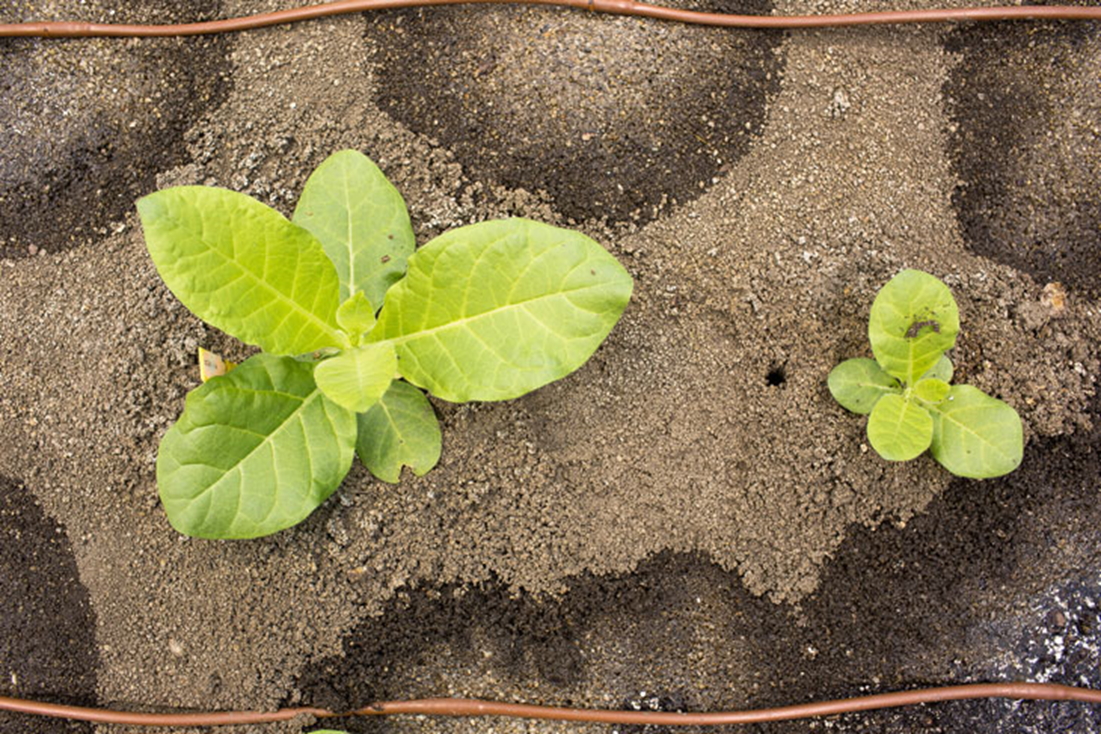A new way to genetically tweak photosynthesis boosts plant growth
A new way to genetically tweak photosynthesis boosts plant growth
Tobacco plants with a simplified process of photorespiration grew 40 percent bigger
At least for some plants, a genetic hack to increase photosynthesis efficiency could be very beneficial for agricultural production.
This feat of genetic engineering reduces the complexity and energy cost of photorespiration, a process that many plants must carry out during photosynthesis. Through this method of genetic modification, tobacco plants grew more than 40% faster in field experiments. If it yields similar results in other crops, that might help farmers fulfill the food demands of a growing global population, researchers write in the Jan. 4 Science.
Subscribe to Science News for the Latest News headlines and summaries of the most recent Science News stories sent directly to your email
In efforts to improve photosynthesis, streamlining photorespiration is “a wonderful step forward,” according to Spencer Whitney, a plant scientist at Australian National University in Canberra who was not involved in the research.
Researchers are attempting to micromanage and enhance plant development by devising methods to make photosynthesis more efficient since that the agriculture business has mostly optimized the use of yield-boosting products like pesticides, fertilizers, and irrigation (SN: 12/24/16, p. 6).
A significant barrier to reaching such efficiency is photorespiration. It happens in many plants, including soybeans, rice, and wheat, when an enzyme called Rubisco unintentionally steals an oxygen molecule out of the environment instead of doing its intended task of converting carbon dioxide from the atmosphere into sugars that feed plant development.
A plant must convert the harmful chemical glycolate into beneficial molecules by photorespiration as a result of the approximately 20% frequent Rubisco-oxygen interaction. A plant cell’s four compartments are involved in this process, which entails a protracted series of chemical reactions. The process of going through a cycle of photorespiration is comparable to traveling from Maine to Florida via California. Depending on the type of plant and the surrounding environment, that energy waste can reduce agricultural yields by 20 to 50%.
Researchers have now created a more direct chemical pathway for photorespiration that is limited to a single cell compartment through genetic engineering; this is the cellular equivalent of driving straight along the East Coast from Maine to Florida.
The genetic instructions for this shortcut were inscribed on fragments of algae and pumpkin DNA, and were inserted by Paul South, a molecular biologist at the U.S. Department of Agriculture in Urbana, Illinois, and colleagues. In order to prevent glycolate from following its natural path through the cell, the researchers genetically altered the cells such that they no longer produce a substance that permits glycolate to move between cell compartments.

NEW AND BETTER When the genetic instructions for photosynthesis in tobacco plants were altered, the growth of the plants increased by about 40% (see the plant on the left) (one at right).
Project Claire Benjamin/RIPE
The team led by South tested its photorespiration detour in plants that were grown in fields under actual agricultural circumstances, in contrast to earlier trials with human-designed photorespiration paths. Compared to unmodified tobacco, genetically engineered tobacco generated 41% more biomass.
It’s “extremely intriguing,” but “you can’t claim, “It’s functional,” adds Veronica Maurino, a plant physiologist at Heinrich Heine University Düsseldorf in Germany who was not involved in the study. It will now work everywhere.
If this photorespiration fix produces the same advantages for other crops as it does for tobacco, it will be seen through experiments with various types of plants. The new set of genetic modifications are the subject of greenhouse tests being conducted by South’s team on potatoes. They also have plans to conduct similar studies on soybeans, black-eyed peas, and rice.
According to Andreas Weber, a plant biochemist at Heinrich Heine University Düsseldorf who coauthored a commentary on the study that appears in the same issue of Science, the approval process for such genetic modifications to be used on commercial farms, including additional field testing, will probably take at least another five to ten years. South’s team “has now established a really high standard,” but he anticipates that academics will keep trying to create ever more effective photorespiration shortcuts.



